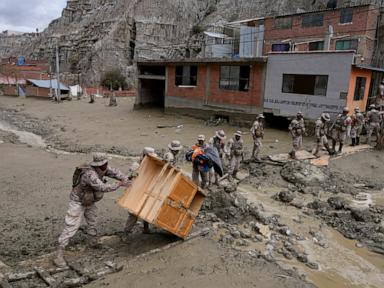ARTICLE AD BOX
THE world’s largest underwater graveyard, littered with ships and skeletons, is buried deep below a tropical paradise.
The Chuuk Islands are home to a famous and idyllic lagoon, once under the control of the Japanese Navy.
 The Chuuk lagoon shipwrecks are home to all manner of eerie objects, including human skullsGetty
The Chuuk lagoon shipwrecks are home to all manner of eerie objects, including human skullsGetty A truck discovered inside the Japanese Hoki Maru shipwreck
A truck discovered inside the Japanese Hoki Maru shipwreck Alamy
Alamy Well preserved naval shipwrecks have been under Micronesia for almost 80 years
Well preserved naval shipwrecks have been under Micronesia for almost 80 years The underwater wreck is nestled in the idyllic tropical paradise of Micronesia
The underwater wreck is nestled in the idyllic tropical paradise of MicronesiaNow tourists, divers, photographers and filmmakers flock to the mysterious watery cemetery to capture and explore remnants of war.
Among the shipwrecks are skulls and bones, china sets from warships, sailors’ belongings and even a somewhat intact bathroom from one of the boats.
In an eerie flashback to the past what appears to be a picture belonging to one of the sailors involved in the battle was recovered from the lagoon.
It could possibly be one of the navy sailor’s sweethearts, who was waiting at home for him to return.
It’s hard to imagine that in 1944 a huge battle between Japan and the United States unfolded in the idyllic Chuuk Lagoon, killing over 4,500 Japanese fighters.
But only 40 Americans died during Operation Hailstone, which sunk hundreds of aircraft and dozens of ships into the azure waters.
The Japanese still pay their respects each year at the lagoon which served as their main army base in the South Pacific.
 Porcelain china from the wreck of the Japanese vessel Fujikawa
Porcelain china from the wreck of the Japanese vessel Fujikawa A soldier’s personal picture – maybe of his sweetheart at home – found in the wreckage
A soldier’s personal picture – maybe of his sweetheart at home – found in the wreckage Rex Features
Rex Features Corbis - Bettmann
Corbis - Bettmann
Its chilling underwater graveyard is nestled in amongst the islands of Micronesia, off the coast of the Philippines, Papua New Guinea and Indonesia.
You’d never guess from looking at the white sand, turquoise sea or small green islands that Micronesia is home to such a painful history.
America ambushed Japanese forces, whose equipment on the islands wasn’t adapted well enough to detect low flying aircraft.
The surprise attack lasted two days and the casualties were enormous.
Now the remains of mostly Japanese, but also American ships lie on the seabed.
What appears to be the remains of an aircraft overtaken by algae also lies still under the water for divers to explore.
And even a bathroom from inside one of the ships remains remarkably intact.
A 20th century diving suit of some kind is also incredibly preserved metres under the surface.
And bizarrely the skeleton of a truck, tires, headlights and frame somewhat intact sits on the sand in the Hoki Maru shipwreck.
Perfectly preserved chinaware sits only inches away from a human skull on a rock bed.
The watery cemetery is a hugely popular destination for divers.
Explorers can swim inside, around and even sometimes through the wrecks.
Some more superstitious divers even believe that ghosts haunt the underwater graveyard.
 Corbis - Bettmann
Corbis - Bettmann The eerie underwater graveyard is home to human skulls
The eerie underwater graveyard is home to human skulls Alamy
Alamy Alamy
Alamy Alamy
Alamy.png)
 10 months ago
7
10 months ago
7








 English (US)
English (US)